Block Conundrum Solution
How it works
This is a communication/logic style puzzle that utilizes the Stroop Effect. Cognitive dissonance is generated by needing to communicate two forms of colors and two forms of numbers among team members.
The four outside cubes each have four properties that need to be described:
- The printed name of a color ("Red", "Green", "Blue", or "Yellow")
- The number printed in front of that color ("1", "2", or "3")
- The number of times the number/color pair is printed (one, two, or three times)
- The color used to print the text (red, green, blue, or yellow)
One of the mobile cubes will display some subset of the four properties. The goal is to match the mobile cube with one of the four stationary cubes, by matching all of the properties displayed. To keep the matches from being trivial, one or more wildcards will be swapped in, indicating properties that don't need to be matched:
- The printed word "any", indicating that any printed color will match
- No number displayed, indicating that any printed number will match
- The printed value "x any" below the first line, indicating that any number of lines will match
- Text printed in black, indicating that any color used by the outside cubes will match
The mobile cube starts out with a series of matches to make, and in most rounds, the outer cubes contain multiple possibilities to match against. In study mode, clicking the face of each cube cycles through the different values. In play mode, clicking the face of the mobile cube does nothing, as the players are required to match each entry in the sequence in order. Clicking the faces of the outer cubes usually continues to cycle them in play mode, however.
Making a successful match removes the entry from the mobile cube. When the team successfully progresses through all the matches in the sequence (ie, the mobile cube is empty), they win that round.
Some examples:
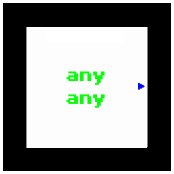
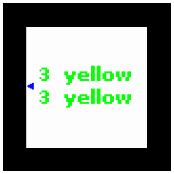
These match: "any" vs. "green", no number vs. "3", two repeats, printed in green.
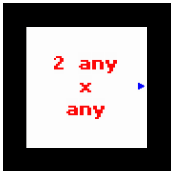
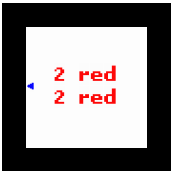
These match: "any" vs. "red", "2" vs. "2", any number of repeats, printed in red.


These also match: "any" vs. "red", "2" vs. "2", any number of repeats, printed in any color.
The challenge is to be able to figure out the matching mechanism, then communicate what is needed to make matches in time to finish each round. Each entry in a round's sequence may have multiple possible matches. If teams make an incorrect match, they have the option to restart the round with whatever time is remaining. The other option (or requirement, if they run out of time) is to reset the round and try again with a new sequence.
Some of the additional challenges posed in the different rounds:
- The duties of time keeper and matchmaker swap after each match, to make sure all cubes have an active role.
- More matches to make, or shorter time limits, forcing teams to be efficient in their communication.
- Hiding the text on the mobile and/or outer cubes during play mode, requiring teams to pay attention in study mode.
- Performing a match consumes an entry from an outer cube, so they have to be strategic to ensure they don't run out of choices before the end of the round.
- Clicking the face of an outside cube will cycle one of the other three outer cubes (deterministically – we're not complete assholes).
When teams finish the required number of rounds (adjusted based on the lateness in the day and GC's assessment of the team's frustration level), the cubes switch to showing six letters, with different color backgrounds. Putting them in rainbow order gives the final answer.
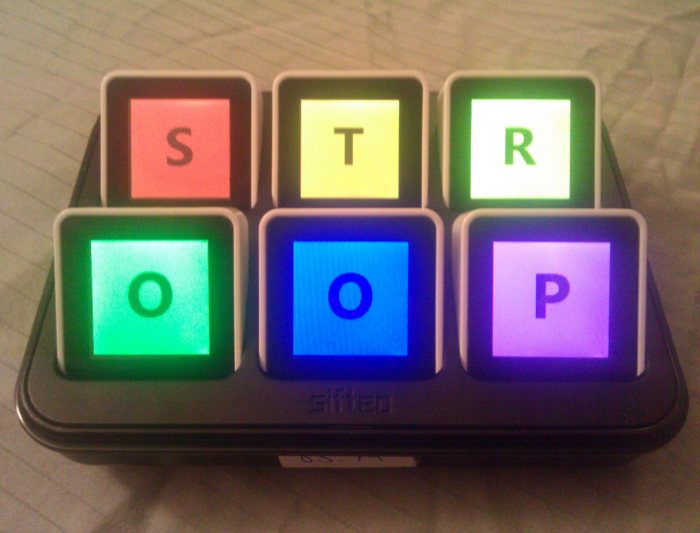
Solution
STROOP
Design Notes
The rounds got progressively more difficult (mostly), by combining different sets of challenges. The dreaded round 7 combined all but the second rule. It challenged teams to make twelve matches, with no extra available choices (all entries on all of the cubes are consumed by the end of the round), while being completely blind in play mode, and while each player's click cycled another player's cube.